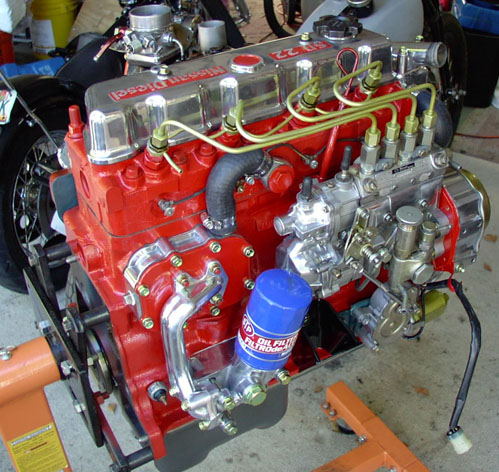
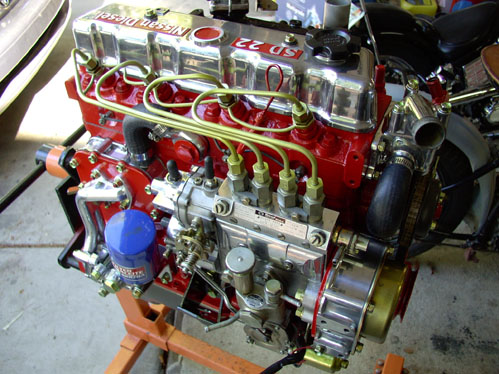

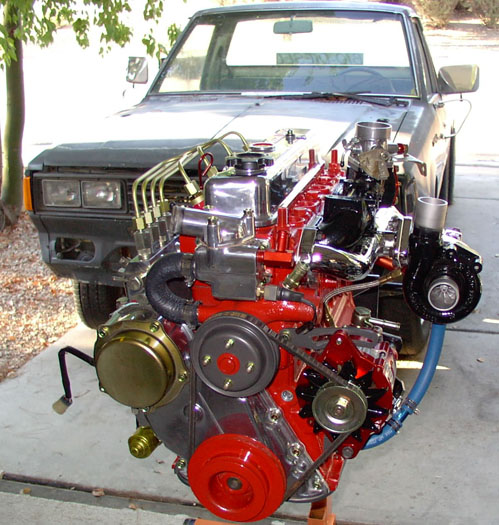
Moderators: plenzen, Nissan_Ranger




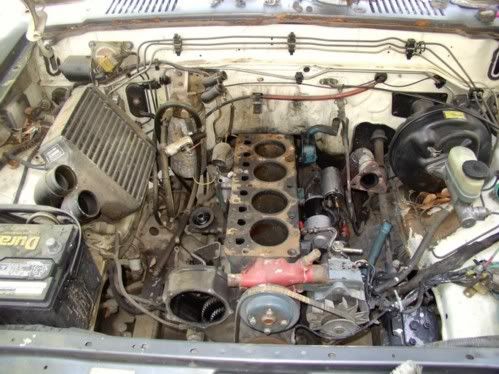
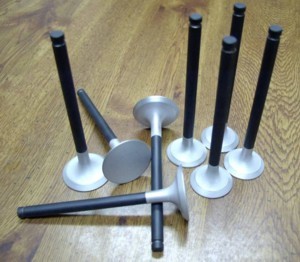
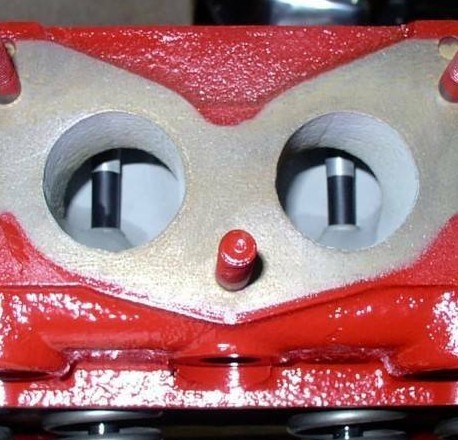
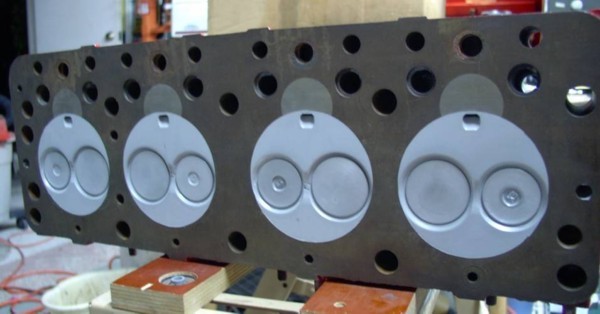
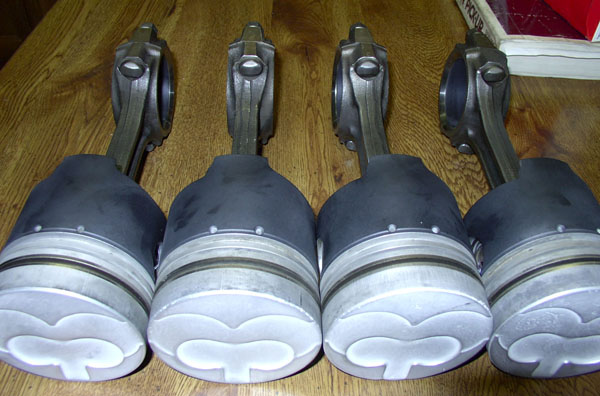
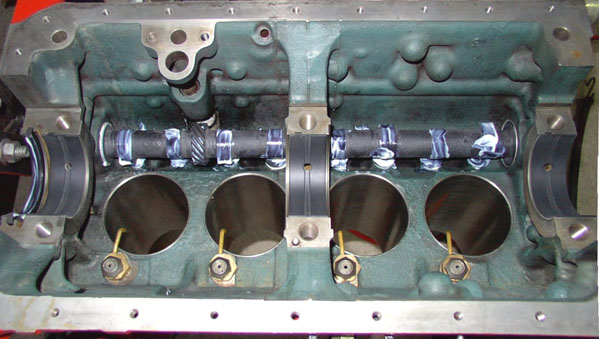
The altitude compensator could not affect boost pressure because all it does is make a very small adjustment to the fuel control lever position when changing altitude.Knucklehead wrote:SNIP- Strangely, the turbo made 7 lbs without turning the pump up, which I attribute to removal of the altitude compensator and the EGR. It ran noticeably better. -SNIP
Despite the spacious appearance underhood, there is not much room to put the turbo in any position but one, and that is about two inches out from the existing manifold, exhaust outlet at dead center. I modified the stock manifold as a prototype but it worked so well I have kept it. I feel there is very little to be gained by trying to fabricate a header. I've done some tests in this area with a couple of high horsepower Cummins and find various restrictions did not have any detectable effect. Cast iron is extremely easy to weld with nickel rod and very strong, so modifying the stock one is the best bet. Please click HERE to see a photo of the cut exhaust manifold before polishing.What turbo did you use, and is the exaust manifold modified cast iron, or fabricated tubular?
Since Phoenix is at 1000+ ft the altitude compensator was holding the pump back at least some infinitesimile amout. With it off, the IP thinks it's at sea level now, giving more fuel, yielding more exhaust, hence boost. I don't know how much before, after, here or there, but the point is that the potential is there in the engine even without touching the smoke screw.The altitude compensator could not affect boost pressure because all it does is make a very small adjustment to the fuel control lever position when changing altitude.
The governor does not work from vacuum, it works from the pressure differential across the TB. Just imagine driving your SD22 for a cool refreshing drive down to somehwere way below sea level where the atmospheric pressure was twice as much, say..., Hell. At idle, the diaphragm sees the same pressure differential between the control side and the vent side as it does at 12,000 up in the Andes. At WOT the vent side will be equal to the control side, allowing the spring to push the rack all the way open. Turbocharged it is the same with the vent plumbed after the turbo. As the French chef said, No diference! Of course, this is theory. We will see how well it works in practice. If it is not satisfactory, and I am unable to get a manual control from an industrial Diesel Kiki pump, it will be easier to modify the one I have than to get an entirely different pump and make it fit.I would normally think that the governor would not like being boost pressurised.
Not necessarily, Galen.Knucklehead wrote:SNIP-Since Phoenix is at 1000+ ft the altitude compensator was holding the pump back at least some infinitesimile amout. With it off, the IP thinks it's at sea level now, giving more fuel, yielding more exhaust, hence boost. I don't know how much before, after, here or there, but the point is that the potential is there in the engine even without touching the smoke screw.-SNIPThe altitude compensator could not affect boost pressure because all it does is make a very small adjustment to the fuel control lever position when changing altitude.
Users browsing this forum: No registered users and 2 guests